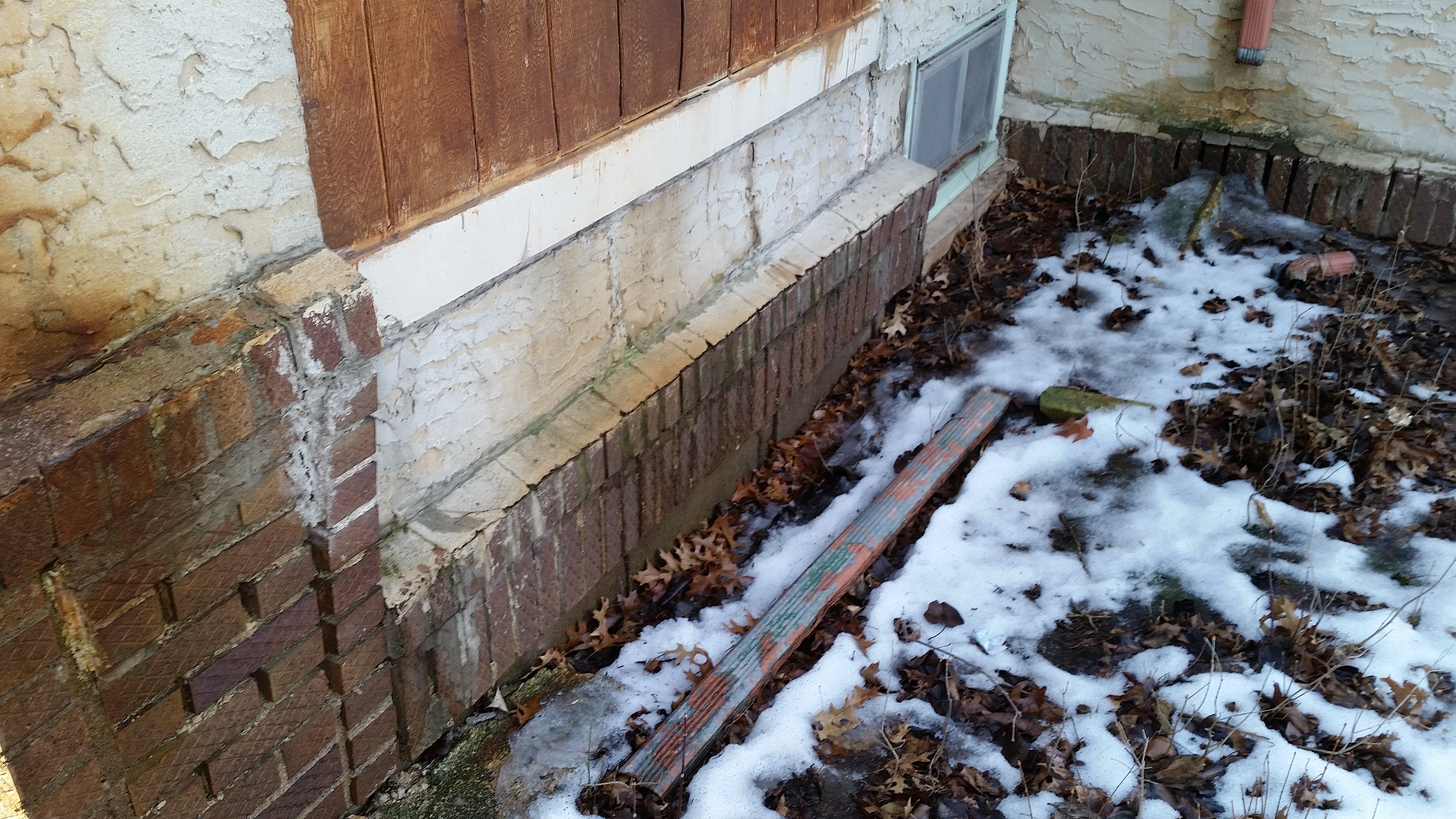On a recent Minneapolis Truth in Housing inspection, I came across this all too common deficiency in a home’s water management system.

When inspecting the gutter system on a home, one of the most common defects relates to the downspout extensions. If you’ll notice here, a downspout extension has been knocked loose and is lying discarded in the foreground of the picture. This has allowed roof runoff to drain down the side of the house and along the home’s foundation. This wreaks havoc on multiple fronts. To begin with, water has soaked the stucco and in this saturated state, the water is going to find any possible avenue it can to work its way inside the home. Notice, also, the mortar work at the foundation brick. Mortar is missing at the joints, having long ago worked its way loose from constant freezing and thawing. At some point, a mortar cap was also added along the top of the brick. This was a poor attempt to keep water out of the home and probably added after a previous owner had noticed that the basement was repeatedly wet. Finally, notice that continual dampness at this corner of the home has compacted the soil, leaving the grading flat and in some areas sunken. In this state, there is no way for water to effectively drain away from the home’s foundation.
Minneapolis Truth in Housing evaluations mark missing downspout extensions as Below Minimum Standard. This doesn’t sound too serious, especially since every older home is going to have some Below Minimum Standard items, some of which are never going to be fixed. But a missing downspout extension should not be dismissed so easily. In the photo, exterior damage to the home can readily be seen. But what about the interior of the home? When water enters a home at the foundation like this, it can lead to foundation issues, damaged walls, ceilings, and floors, and possible mold related issues, to name just a few. And based on what our picture reveals, it’s pretty much a given that the interior portion of the inspection is going to find some or all of these problems.
As part of your home’s routine maintenance, check that all downspout extensions are in place and securely fastened, that they are not leaking, and that they run a sufficient distance from your home’s foundation to prevent roof runoff from finding its way in to your home. And please don’t simply rely on a drain tile system to keep your basement dry. That should be your last line of defense. The goal is to keep water out in the first place, and proper downspout extensions are always a part of that water management plan.
Dan Seeland,
Strickland Home Inspections
It’s so important to use your downspouts properly like you mentioned! We had a broken downspout that took some time to repair and in the mean time our drain tile system backed up and flooded our basement. downspouts are incredibly important to your water management.